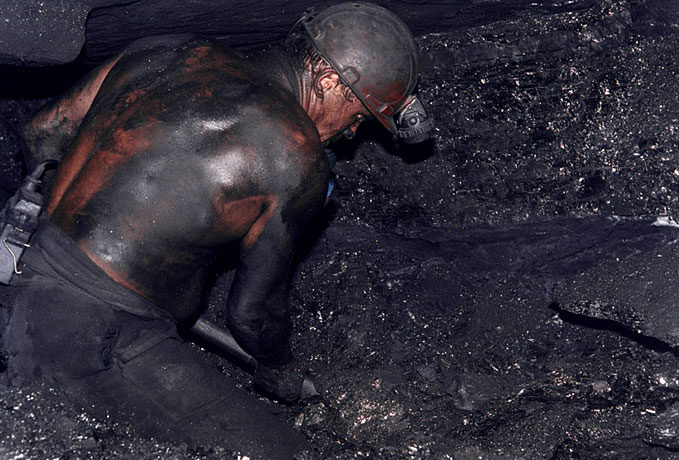People hear climate change through different concerns. Some hear threats to the environment, others to people, and others still to national security. (Of course, there is overlap.)
For those in the national security category, the National Security Journalism Initiative has created Global Warning.
Go to A Complex Climate Threat and click on water management—Morocco spends more than 1/5 of its budget on water management, and Sana’a could run out of water in 2025.
Click on flooding:
Last summer, record floods ravaged Pakistan, killing nearly 2,000 people, damaging or destroying 1.2 million homes and laying waste to large portions of farmland. Afterward, 34 percent of the rice crop was gone and cholera swept through camps, affecting tens of thousands of people.
During previous disasters in unstable regions — the 2004 tsunami in Southeast Asia, the 1998-2000 drought in Central Asia — terrorist groups stepped in where governments failed, winning supporters with their aid. There were reports of such efforts following the Pakistan floods.
Click on energy shifts:
Since the Industrial Revolution, economic growth has been propelled by fossil fuel emissions. Switching to alternative fuels would change the foundation of the global economy.
While higher energy prices would give major oil exporters resources to increase their power, a shift away from fossil fuels could force changes in petro-regimes. The National Intelligence Council predicts Saudi Arabia, which would absorb the biggest shock, would face new pressures to institute major economic reforms, including women’s full participation in the economy.
Click on international trade:
Climate change stands to disrupt global markets, alter key trading routes and affect natural resource supplies.
After more than one-third of Russia’s grain crop was destroyed last summer by a devastating heat wave and fires — extreme weather events that President Dmitry Medvedev called “evidence of this global climate change” — the country banned all grain exports until the end of the year, causing a price spike in global markets. Less than a week later, food riots broke out in Mozambique.
Go here for videos on threats from climate change to California agriculture, NYC, and Houston energy infrastructure.
Recent articles include
Our man in the greenhouse: Why the CIA is spying on a changing climate
This summer, as torrential rains flooded Pakistan, a veteran intelligence analyst named Larry watched closely from his desk at CIA headquarters just outside the capital.
For Larry, head of the CIA’s year-old Center on Climate Change and National Security, the worst natural disaster in Pakistan’s history is a warning.
“It has the exact same symptoms you would see for future climate change events, and we’re expecting to see more of them,” Larry, who asked his last name not be used for security reasons, said in a recent interview at the CIA. “We wanted to know: What are the conditions that lead to a situation like the Pakistan flooding? What are the important things for water flows, food security, [displaced people], radicalization, disease?”
As intelligence officials assess key components of state stability like these, they are realizing that the norms they had been operating with — like predictable river flows and crop yields — are shifting.
But the U.S. government is ill-prepared to act on changes that are coming faster than anticipated and threaten to bring instability to places of U.S. national interest, according to interviews with several dozen current and former officials and outside experts, and a review of two decades’ worth of government reports. Climate projections lack critical detail, they say, and information about how people react to changes — for instance, by migrating — is sparse. Military brass say they don’t yet have the intelligence they need in order to act.
Glacier melt hasn’t caused a national crisis in Peru, yet. But high in the Andes, rising temperatures and changes in water supply have decimated crops, killed fish stocks and forced entire villages to question how they will survive for another generation.
U.S. officials are watching closely because without quick intervention, they say, the South American nation could become an unfortunate case study in how climate change can destabilize a strategically important region and, in turn, create conditions that pose a national security threat to Americans thousands of miles away.
Think what it would be like if the Andes glaciers were gone and we had millions and millions of hungry and thirsty Southern neighbors,” said former CIA Director R. James Woolsey. “It would not be an easy thing to deal with.”
Glaciers in the South American Andes are melting faster than many scientists predicted, causing a dramatic change in the region’s availability of water for drinking, irrigation and electricity. Some climate change experts estimate entire glaciers will disappear in 10 years due to rising global temperatures, threatening to create instability across the globe long before their ultimate demise.
Houston oil infrastructure exposed to storms
The largest search and rescue operation in U.S. history; the largest Texas evacuation ever; a $30 billion price tag and 112 deaths in the U.S….And Ike was only a Category 2 storm with mild-for-a-hurricane winds of 109 mph.
If Ike had been a direct hit on the channel, refineries would have been flooded with seawater despite 16-foot fortifications, likely requiring months of repairs and prolonging supply disruptions, according to analysis by the Severe Storm Prediction, Education and Evacuation from Disasters Center at Rice University.
Not only is the sea level rising, the land is sinking.
Disease: A top U.S. security threat
One of the most worrisome national security threats of climate change is the increased spread of disease, with potentially millions of people at risk of serious illness or death and vast numbers of animals and crops also in danger of being wiped out, U.S. intelligence and health officials say.
But more than a decade after such concerns were first raised by U.S. intelligence agencies, significant gaps remain in the health surveillance and response network—not just in developing nations, but in the United States as well, according to those officials and a review of federal documents and reports.
And those gaps, they say, undermine the ability of the U.S. and world health officials to respond to disease outbreaks before they become national security threats.
U.S. military grasps effects of the rising tide
Climate change is fast becoming one of those security threats, according to U.S. and Bangladeshi officials, who have concluded it will help create new conflict hotspots around the world and heighten the tensions in existing ones—and impact the national security of the United States in the process. Moreover, climate change could overstress the U.S. military by creating frequent and intensified disasters and humanitarian crises to which it would have to respond.
Nowhere is that potential chain of events more worrisome than in Bangladesh, a country strategically sandwiched between rising superpowers China and India, and which also acts as a bridge between South Asia and South East Asia.
Already, Bangladesh is beset by extreme poverty, overcrowding and flooding that frequently render large numbers of people homeless. The Muslim-majority country also has had problems with Islamist radicalization.
And over the next two generations, those problems are expected to get worse due to climate change, which worsens other problems such as food and water scarcity, extreme weather and rising seas, according to interviews with current and former officials and experts. By 2050, rising sea waters are projected to cost the low-lying country about 17 to 20 percent of its land mass, rendering at least 20 million people homeless and decimating food production of rice and wheat, according to the United Nations Intergovernmental Panel on Climate Change. By then, its population is projected to reach more than 200 million, which could lead to internal societal unrest that spills over into neighboring India.












